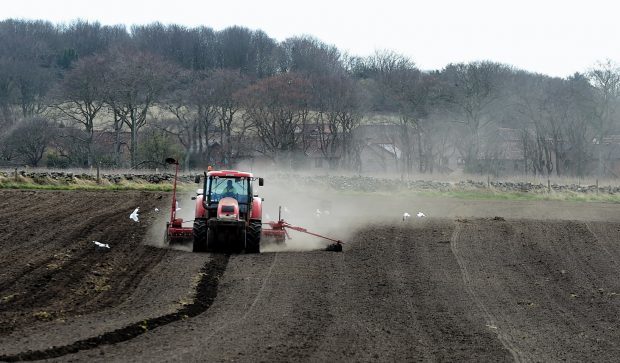The benefits and challenges of using cover crops within an arable rotation were up for discussion at a meeting of the Scottish Society for Crop Research at the James Hutton Institute (JHI) in Dundee.
Very little in the way of trials or research into cover crops has been done in Scotland possibly because of the short window of establishment and reduced growing season. However a three-year, field-scale trial is now into its second year at the JHI’s Balruddery Farm, which is expected to produce some worthwhile data.
Blair McKenzie, soil research scientist with the JHI, pointed out that the very wet winter in 2015/16 probably produced atypical results for the 200m long plots which were sown with seven different types of cover crop in September. The field is due to be sown in Concerto spring barley soon and this year’s results are expected to be more in line with a normal year.
The trials are supported by specialist crop seed merchants Kings and the company’s sales manager, Richard Barnes, said there were many reasons for farmers to consider growing cover crops.
He said: “Farmers should keep an open mind on their place within the rotation, especially in Scotland.”
Kings has conducted two case studies in Scotland on farms which have grown cover crops.
The first was oil radish sown after vining peas in July on a Perthshire farm, with the purpose of holding on to the nutrients left from the peas before sowing winter wheat. The second, in the Borders, was September-sown forage rye, radish, tillage radish and phacelia, with the purpose of providing ground cover and grazing for sheep.
Mr Barnes said he believed there were opportunities for cover crops to be sown into potato and vegetable headlands, which would help trap nutrients from irrigation run off. He also said the rule which allows Ecological Focus Areas (EFAs) to be grazed after December 31 made them an attractive choice for mixed livestock and arable farms.
Doug Christie, who farms 1,200 acres at Durie Farms, Leven in Fife, has been dabbling in cover crops since 2006 and for the last four years all his spring cropping has gone into fields which have had cover crops.
He has seen a rise in organic matter in his soils of 0.5% and a massive increase in worm activity and he believes that, for an establishment cost of £16 to £20 per acre, the improvement to soil health is well worth it.
